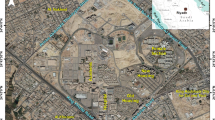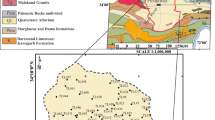Abstract
The human-elephant conflict is a key problem in forest border areas that ways agriculture damage, human, and elephant loss. As a solution to HEC, an early warning is provided to humans as an alert or to raid the elephants back to the forest. To detect the elephant intrusion, a geophone seismic vibration sensor is used in this work. As the forest border is prone to get rain frequently, the sensitivity of geophone output can be affected and may not detect the vibration due to the dampness in the soil. To improve the performance, the sensing system is designed to adapt variable soil conditions and thereby adjusts the level of threshold as per the noise variance influenced by the ground sources at the geophone output. We explored the variance in the spectral parameters and the signal strength of the elephant foot fall signal and arrived at a design as solution to avoid problems related to the noise and variable soil circumstances.
Access this chapter
Tax calculation will be finalised at checkout
Purchases are for personal use only
Similar content being viewed by others
References
H.N. Kumara, S. Rathnakumar, M. Ananda Kumar, M. Singh. Estimating Asian elephant, Elephasmaximus, density through distance sampling in the tropical forests of Biligiri Rangaswamy Temple Tiger Reserve, India. J. Trop. Conserv. Sci. 5(2), 163–172 (2012)
D.T.S. Wijesekera, M.T. Amarasinghe, P.N. Dassanaike, T.H.H. De Silva, N. Kuruwitaarachchi, Modern solution for human elephant conflict, in 2021 2nd International Conference for Emerging Technology (INCET). IEEE (2021, May), pp. 1–6
K. Ramkumar, et al.Human and elephant (Elephas maximus) deaths due to conflict in Coimbatore Forest Division, Tamil Nadu, India. ZOO’s PRINT XXIX(8), 12–19 (2014)
S.J. Sugumar, R. Jayaparvathy, An early warning system for elephant intrusion along the forest border areas. Curr. Sci. 104, 1515–1526 (2013)
J.D. Wood, C.E. O'Connell-Rodwell, S.L. Klemperer, Using seismic sensors to detect elephants and other large mammals: a potential census technique. J. Appl. Ecol. 42, 587–594 (2005)
B. Mortimer, W.L. Rees, P. Koelemeijer, T. Nissen-Meyer, Classifying elephant behaviour through seismic vibrations. Curr. Biol. 28(9), R547–R548 (2018)
R.K. Mandal, D.D. Bhutia, A proposed artificial neural network (ANN) model using geophone sensors to detect elephants near the railway tracks, in Advanced Computational and Communication Paradigms, ed. by S. Bhattacharyya, N. Chaki, D. Konar, U. Chakraborty, C. Singh. Advances in Intelligent Systems and Computing, vol. 706 (Springer, Singapore, 2018). https://doi.org/10.1007/978-981-10-8237-5_1
D.S. Parihar, R. Ghosh, A. Akula, S. Kumar, H.K. Sardana, Seismic signal analysis for the characterisation of elephant movements in a forest environment. Ecol. Inform. 64, 101329 (2021)
A. Barzilai, T. Van Zandt, T. Kenny, Technique for measurement of the noise of a sensor in the presence of large background signals. Rev. Sci. Instrum. 69(7), 2767–2772 (1998)
R. Brincker, T. Lago, P. Andersen, C. Ventura, Improving the classical geophone sensor element by digital correction, in Proceedings of the International Modal Analysis Conference, Orlando, FL, USA (2005)
H.P. Gavin, Vibrations of Single Degree of Freedom Systems (CEE 201L, 2014)
M. Hons, et al., Ground motion through geophones and MEMS accelerometers: sensor comparison in theory modeling and field data, in 2007 SEG Annual Meeting. Society of Exploration Geophysicists (2007)
S. Thangavel, C.S. Shokkalingam, The IoT based embedded system for the detection and discrimination of animals to avoid human–wildlife conflict. J. Ambient Intel. Human. Comput. 1–17 (2021)
K.O. Daffallah, G.M. Abdellattif, A.I. Adam, Development of a soil moisture control system with PC monitoring. Gezira J. Eng. Appl. Sci. 5(1), (2010)
Author information
Authors and Affiliations
Corresponding author
Editor information
Editors and Affiliations
Rights and permissions
Copyright information
© 2022 The Author(s), under exclusive license to Springer Nature Singapore Pte Ltd.
About this paper
Cite this paper
Sugumar, S.J., Jeevalakshmi, D., Shreyas, S., Vishnu, R., Suryakotikiran, M.S., Kushalappa, B. (2022). Analysis and Testing of Geophone for Different Soil Conditions for Elephant Intrusion Detection. In: Saini, H.S., Singh, R.K., Tariq Beg, M., Mulaveesala, R., Mahmood, M.R. (eds) Innovations in Electronics and Communication Engineering. Lecture Notes in Networks and Systems, vol 355. Springer, Singapore. https://doi.org/10.1007/978-981-16-8512-5_17
Download citation
DOI: https://doi.org/10.1007/978-981-16-8512-5_17
Published:
Publisher Name: Springer, Singapore
Print ISBN: 978-981-16-8511-8
Online ISBN: 978-981-16-8512-5
eBook Packages: EngineeringEngineering (R0)




